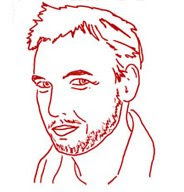In response to the blogposts of Jane Davies and Jeffrey Keefer on grounded theory and situational analysis, I decided to share the qualitative methods applied for my article 'Pathways in interactive media practices among youths' published in Learning, Media and Technology. This article was part of the special edition titled 'Learning, the Net Generation and Digital Natives' and edited by Chris Jones.
The qualitative study would count more as situational analysis instead of grounded theory I suppose. However, the iterative waves of comparative analysis were an essential part of my method.
For this article, semi-structured 1-to-1 sessions were set up. The respondents were selected by means of purposive sampling. This method implies an active search for cases within categories, with the purpose of a better understanding of behaviour. This means that all students in the selected schoolclasses filled out a questionnaire about their use of interactive media (IE. Internet and games). The respondents were then identified based on the user categories that resulted from a previous survey study (published in Journal of Computer Assisted Learning). Students were randomly selected from each user category to represent the population division of the survey results.
During the interview sessions questions were posed regarding the respondent's history of interactive media use and the purpose, opinions and social networks related to these media. The interview questions served as probes for the respondents to tell stories about their interactive media use.
The second part of the interview consisted of questions steered by autodriving visual elicitation as proposed by Prosser and Loxley (2008). This method is intended to let respondents show what is important to them (in this case specific interactive media), while simultaneously explaining how they used these media. The principle of autodriving helped to ensure that interviews include topics relevant to the respondents.
All interviews were video recorded by means of a webcam. This helped the 'line by line analysis' to a large extent. The researcher was aware of the allocation of respondents in user categories during the interview, which guided the themes to be discussed. For instance: Gamers were asked more, but not solely, about games. However, in order to let all possible themes arise, all types of interactive media were touched upon.
The data analysis consisted of two phases:
1) a within-case analysis to reach data reduction and
2) a cross-case analysis to search for patterns in the respondents' stories.
In the first phase, data of each respondent were analysed. After transcription and open-ended coding of the interviews, a thematic coding around categories corresponding to the research questions was performed.
The technique of 'constant comparative analysis' as proposed by Glaser and Strauss (1967) was used for both the vertical and the horizontal analysis in order to continuously compare preliminary interpretations with accounts of the other respondents and the theoretical framework. In this process of reading, interpreting and checking, the patterns of interactive media use, including origins of specific types of use arose from the data.
Subscribe to:
Post Comments (Atom)

Antoine-
ReplyDeleteQuite interesting to share this as part of this ongoing conversation.
Can you talk a little about how your recording these interviews with a webcam helped you with the line by line analysis?
Jeffrey
In order to minimize interference with the interview, I used a webcam instead of a regular video camera. The recordings were transcribed including non-verbal expressions such as face expression, gestures and bodily movements such as sitting upright, leaning forward, etc.
ReplyDeleteEventually the non-verbal expressions did not provide in a better understanding of the respondents stories, apart from the fact that the gaze of the most intensive media users seemed to be glued to the screen. Others would occasionally look at the interviewer.
During the analysis of the transcripts, it appeared useful to now and then look back at the original footage.